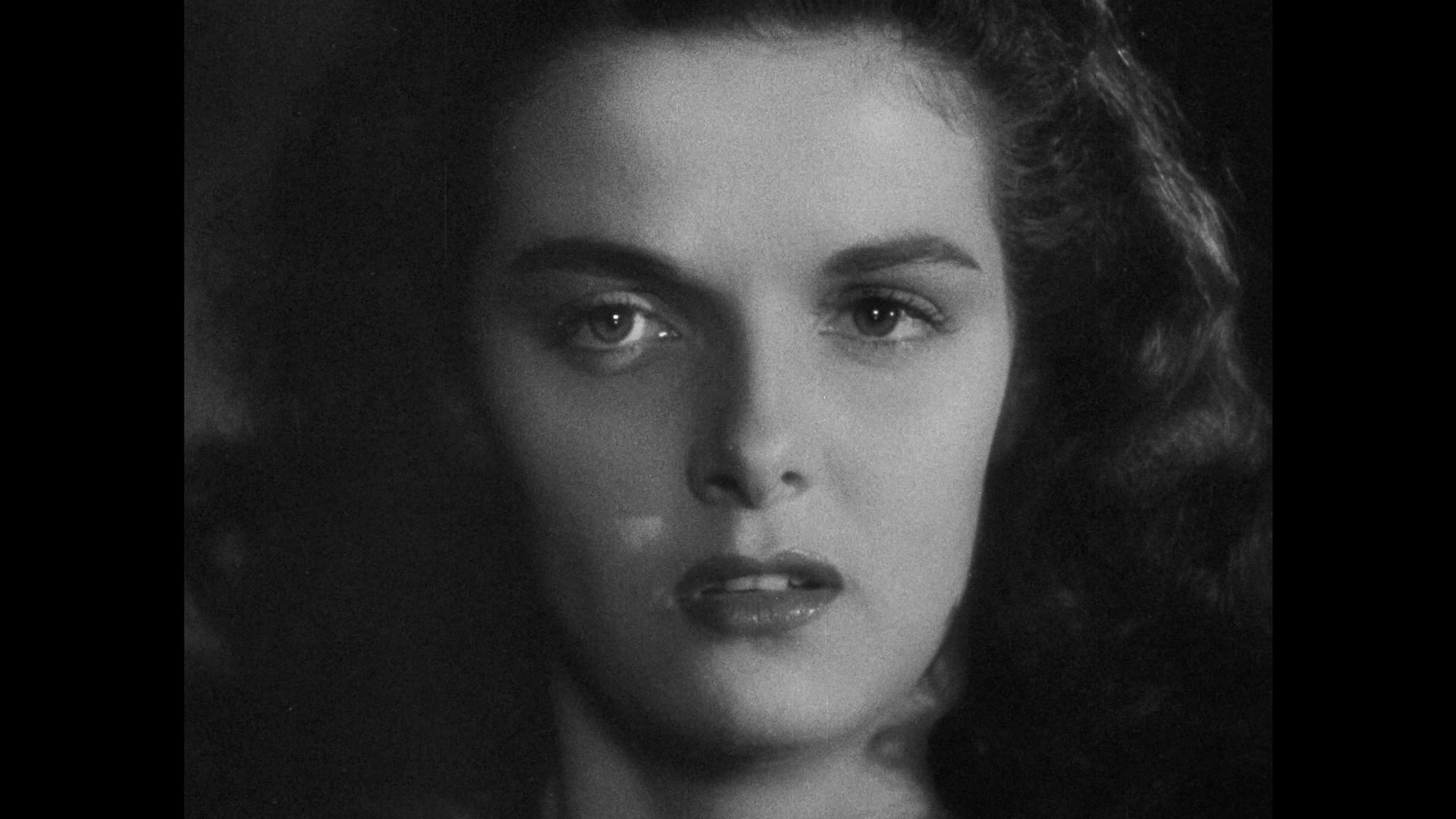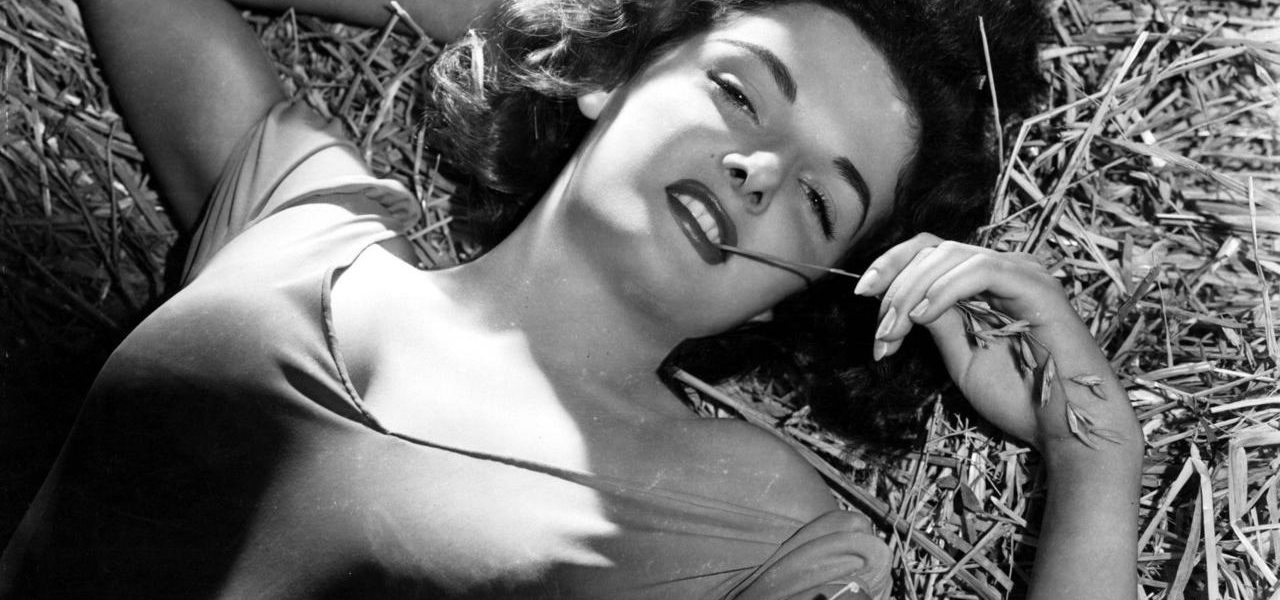Twin Passions Of Producer/Director Howard Hughes On Ample Display In Notorious Sex Western
DIRECTED BY HOWARD HUGHES (uncredited co-director: HOWARD HAWKS)/1943
STREET DATE: FEBRUARY 27TH, 2018/KINO LORBER STUDIO CLASSICS
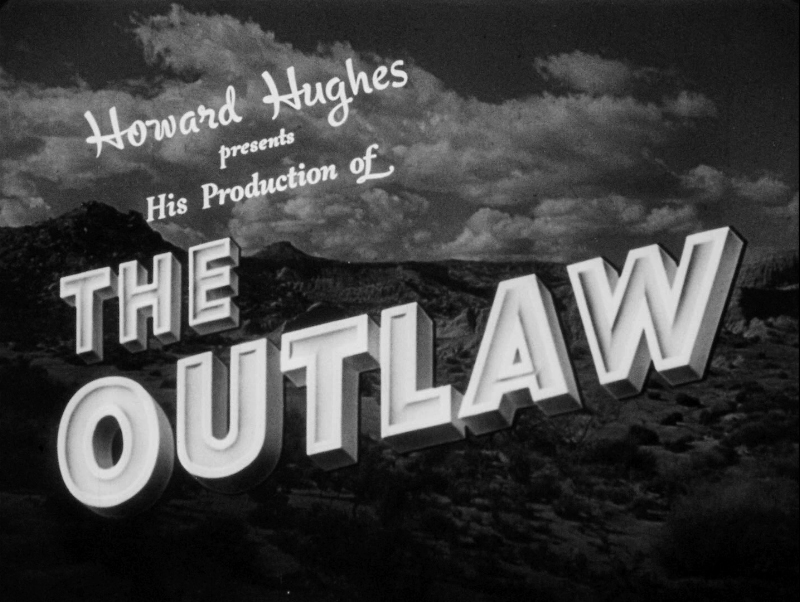
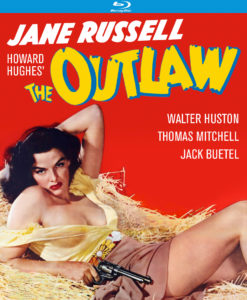 Like a pressure release over a full decade of implied, sublimated, symbolized, insinuated, suggested, intimated, and just plain hinted screen sexuality (thanks, Google Thesaurus!), the two-year promotional blitz of 19-year-old Jane Russell, in the most salacious advertising campaign of a novice actress in Hollywood history, had media groups, moral pundits, and the puritanical Production Code in a frustrated frenzy before the film had even been publicly exhibited. Completed in 1941 but delayed by its producer/director’s epic battle of wills with the Hays Office (the governing board that administered the Production Code), the fixation on Russell’s low-cut dresses and, shall we say, inadequately restrained personal assets obscured even kinkier elements that its censors, early audiences, and possibly even its filmmakers were not fully aware. All told, aircraft manufacturer and independent movie mogul Howard Hughes spent 2 ½ million dollars of his personal fortune realizing every detail of The Outlaw’s production — most significantly in his over-emphasis on the natural gifts of his star-making discovery — but ended up making over twice that amount back in re-release and rentals, despite the film failing to receive wide release until nearly five years after shooting wrapped. Which just goes to show, one supposes, that sex ultimately does sell.
Like a pressure release over a full decade of implied, sublimated, symbolized, insinuated, suggested, intimated, and just plain hinted screen sexuality (thanks, Google Thesaurus!), the two-year promotional blitz of 19-year-old Jane Russell, in the most salacious advertising campaign of a novice actress in Hollywood history, had media groups, moral pundits, and the puritanical Production Code in a frustrated frenzy before the film had even been publicly exhibited. Completed in 1941 but delayed by its producer/director’s epic battle of wills with the Hays Office (the governing board that administered the Production Code), the fixation on Russell’s low-cut dresses and, shall we say, inadequately restrained personal assets obscured even kinkier elements that its censors, early audiences, and possibly even its filmmakers were not fully aware. All told, aircraft manufacturer and independent movie mogul Howard Hughes spent 2 ½ million dollars of his personal fortune realizing every detail of The Outlaw’s production — most significantly in his over-emphasis on the natural gifts of his star-making discovery — but ended up making over twice that amount back in re-release and rentals, despite the film failing to receive wide release until nearly five years after shooting wrapped. Which just goes to show, one supposes, that sex ultimately does sell.
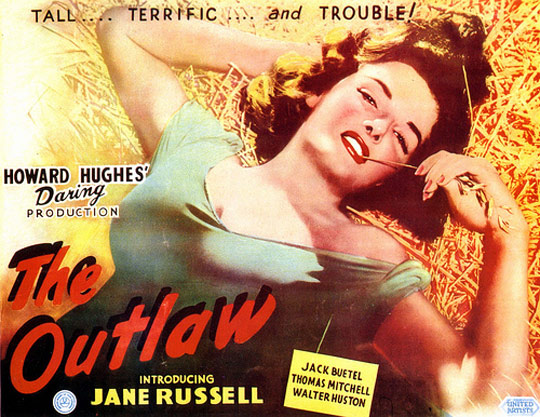
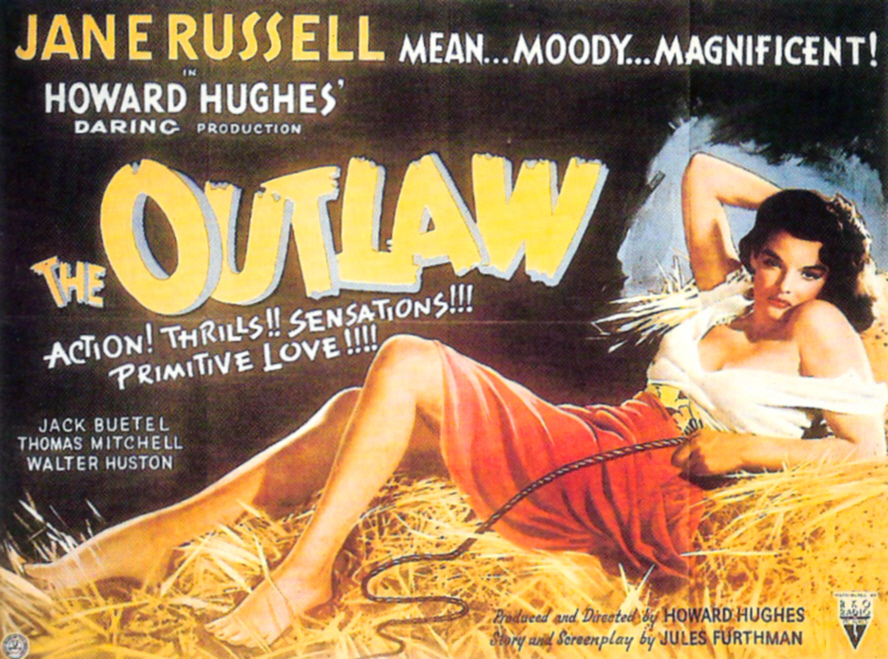
Production began with Howard Hawks in the director’s chair, with esteemed Westerns cinematographer Lucien Ballard (later photographing Sam Peckinpah’s 1962 Ride the High Country and 1968’s The Wild Bunch) bringing his landscape-oriented lens to the visual proceedings, until relations between producer Hughes and his director apparently broke down a mere two weeks into shooting, causing Hughes to scrap all footage shot to that point and, taking the directing reins himself, to begin production again from scratch. Replacing Ballard with Gregg Toland behind the camera, the latter fresh off shooting Orson Welles’s Citizen Kane (1941), Hughes also shifted emphasis from the tale of rivalry, camaraderie, and professionalism that scriptwriter Jules Furthman and first director Hawks originally intended toward hothouse melodrama and simmering sexuality. And regarding the latter, it is certainly unsurprising, given the well-documented obsessions of Howard Hughes, that production should have further shifted toward prurient over-attention to the most fully-developed of inexperienced ingenue Jane Russell’s screen capabilities.
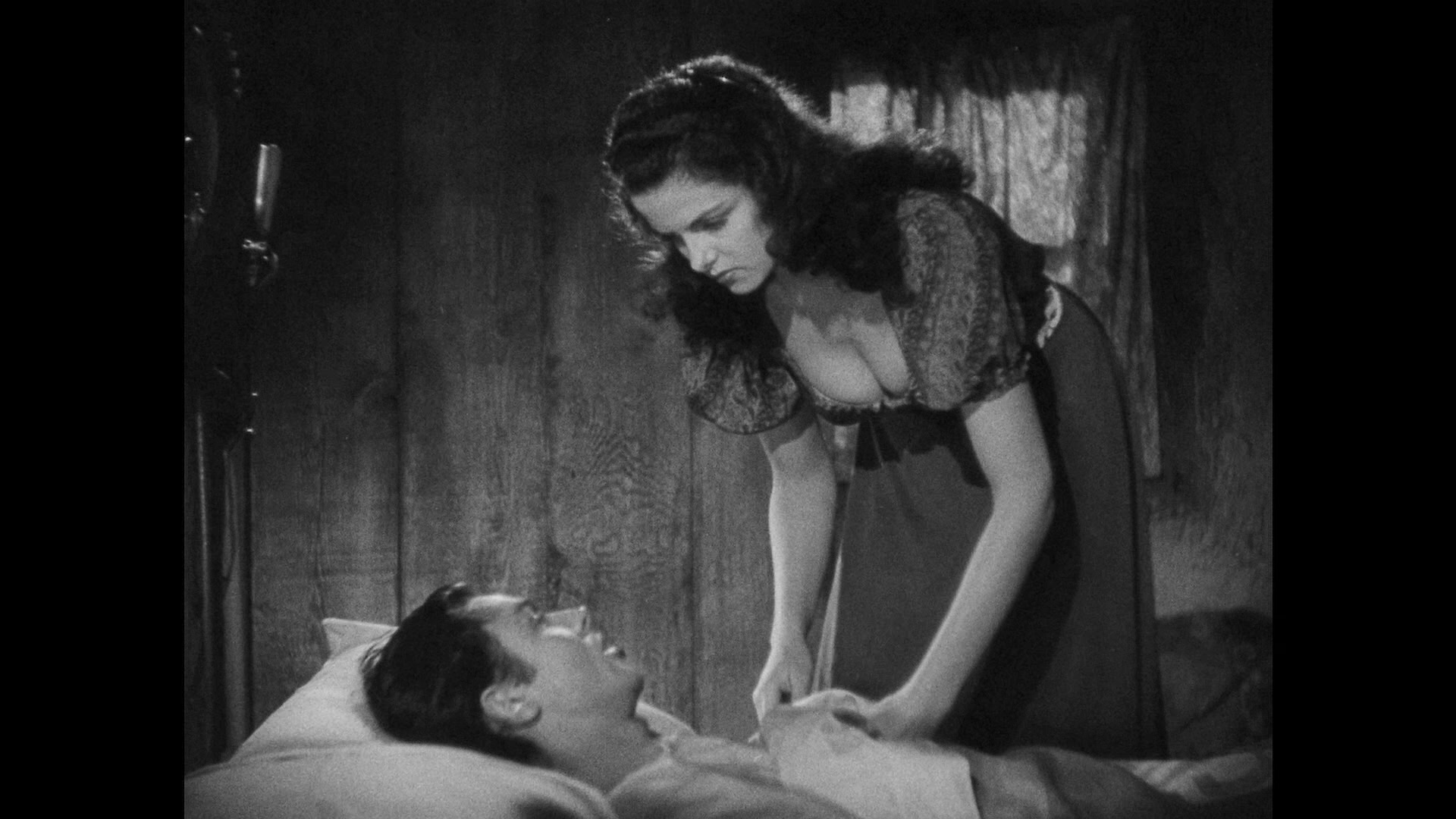
As for the film itself, which is considerably less interesting than the ballyhoo and backstories surrounding it, The Outlaw features not one but two title figures, along with the lawman pursuing them, in the unlikely sexual triangle (and more on that in a bit) of legendary Western gunmen Doc Holliday, Sheriff Pat Garrett, and Billy the Kid. Old Hollywood pros Walter Huston, as Doc, and Thomas Mitchell, as Pat, bring much needed expertise to their roles of the older and more experienced Westerners, while newcomers Jack Buetel, as Billy, and Jane Russell, as half-Mexican spitfire Rio, attractively anchor the frame – and little else – in their respective roles. Backed by one of the most ludicrous scores of the Classic Hollywood era, thundering strains of Tchaikovsky inflate every unambiguous encounter between Billy and Rio to equally unambiguous climax, while the literal “wah-wah-waaah” of a wailing trumpet deflates every witless punchline with the thudding obviousness of subtext lacking real text to begin with. Throwing the balance off in the dynamic between the inexpertly played leading roles, the rough rides in the canyons and deserts, through sage, sand, and brush, come off as much ado about very little indeed; excepting of course the screen-filling talents of Jane Russell, whose fetishistic presentation offers little more than a distraction for the possibly disinterested title hero. As such, the real love story of The Outlaw comes off not so effectively between Billy and Rio as it becomes more obviously, hilariously, and unintentionally apparent in the various pursued and pursuing jealousies of Doc, Pat, and Billy.
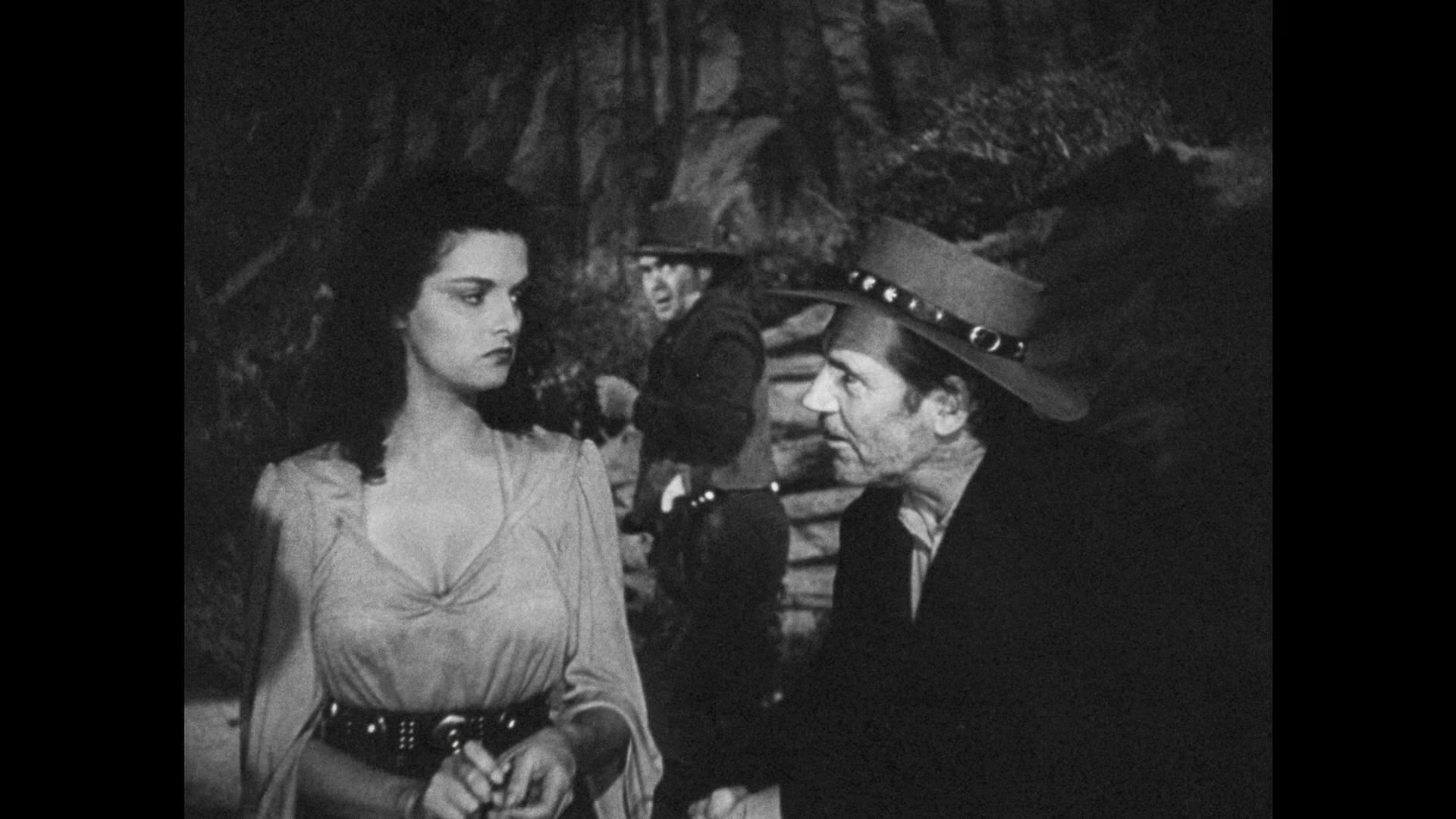
Nicholas Ray’s Johnny Guitar (1954) and the spaghetti Westerns of Sergio Leone would much more successfully exploit the genre expectations The Outlaw plays against in terms of both offbeat content and languorous pacing, but for all its (again, hilarious) deficiencies and (over and again, hilarious) exploitative tendencies, particularly regarding the ample display of its producer/director’s unconcealed twin passions, this most unconventional of screen romances, dramas, and not to mention Westerns is certainly unlike anything Hollywood produced before. Not broad enough for parody but not figuratively straight enough to be taken seriously, The Outlaw may be Classic Hollywood’s first accidental camp classic. And while I’ve had fever dreams that were more lucid and had more story momentum than The Outlaw’s often torturous 2-hour running-time, one can certainly appreciate something so bizarrely different in its near-admirable level of folly.
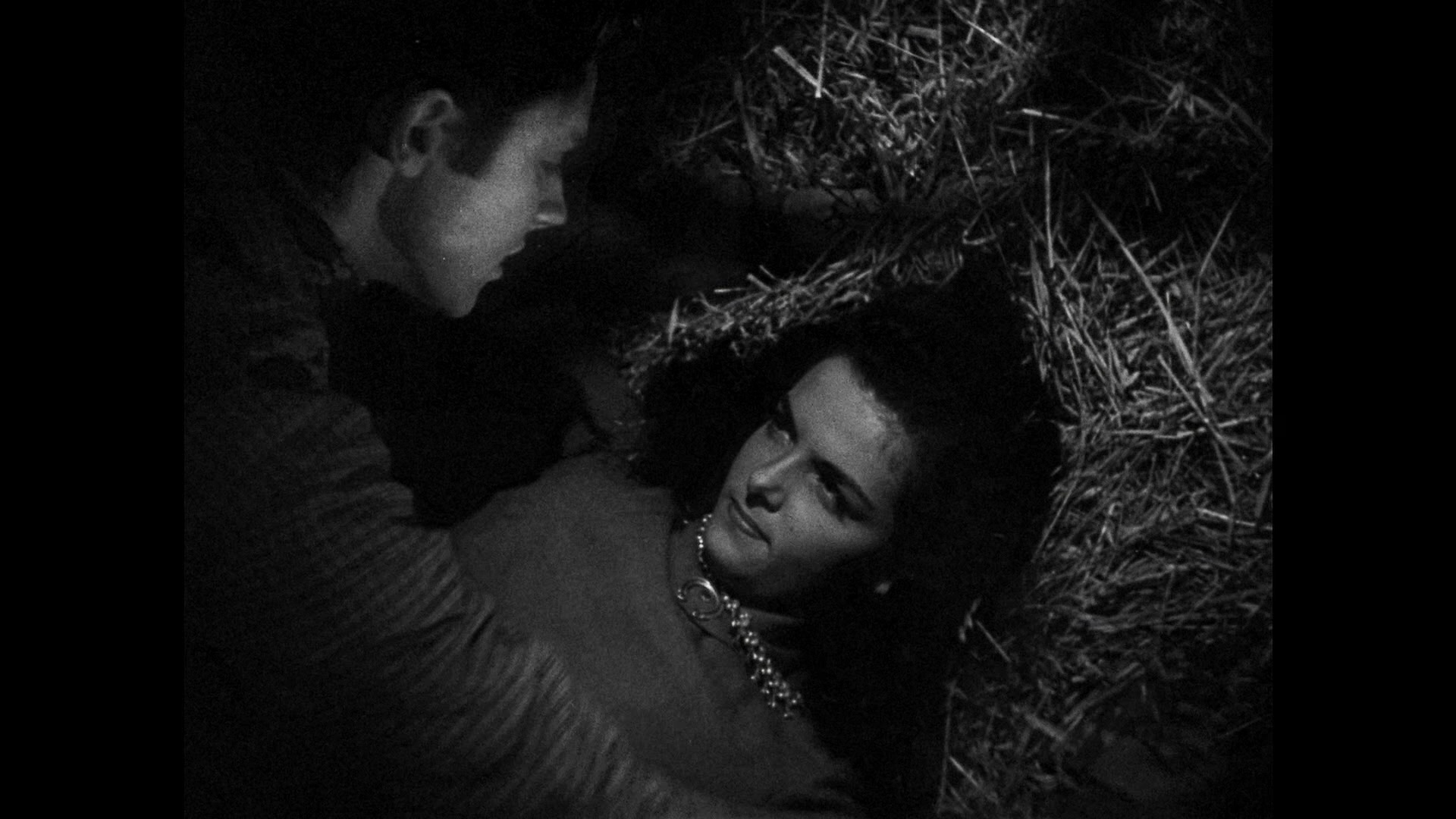
As a final note, I would like to be able to say that Kino Lorber’s 2K restoration is a vast improvement over previous public domain copies, which have flooded the home video market the past four decades with poor transfers taken from inferior 16MM prints, but unfortunately the picture and sound quality is merely marginal in its improvements, as many of the visual and audio flaws – particularly noticeable in the former during night and dusk scenes, when optical streaks and blurring are readily evident – appear to be engrained in the source footage itself, necessitating a greater and more in-depth restoration project than The Outlaw may ultimately warrant. A shame.
While this Blu-ray does come with a deeply informative and highly entertaining commentary track from Troy Howarth, which is worth the price of admission alone, for better or worse – echoing playwright/wit George S. Kaufman’s famed dismissal of the film’s content as A Tale of Two Titties – The Outlaw does hold a unique place in film history as not only the multi-millions realization of a juvenile-level female fixation, from one of American history’s foremost weirdoes, but also the initial Hollywood film to substantially challenge the corseted attitudes of its too-powerful censors. As the first movie to literally bust open that corset wide, one may feel somewhat embarrassed to sing its praises, but at least one may say The Outlaw offered future films less restraint and much-needed breathing room.
All screen-images are credited to DVDBeaver and are taken directly from Kino Lorber’s Blu-ray release.
